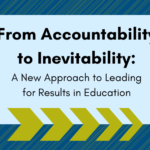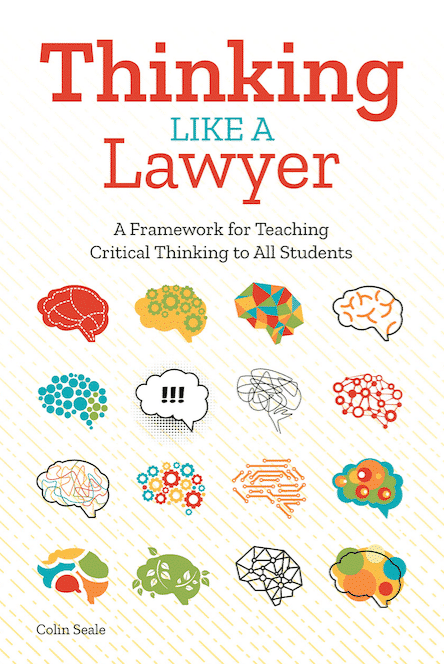Let’s be honest — it is not easy to speak with young people about #BlackLivesMatter and the tragic, graphic, and sometimes controversial incidents that have sparked this movement. But we do our students a disservice if we do not take advantage of our educational spaces to allow them to process these events.
At the same time, many educators fear the backlash that may occur if they do something “wrong” in these discussions and feel unprepared to lead these conversations. Using the recent South Carolina incident as an example, here are 7 practical tips for having these crucial conversations.
1. Pull yourself together, somewhat.
It always takes me a day or two to muster up the courage to watch a video of police misconduct. And when I see these, I’m stuck dealing with so many intense emotions that it is hard for me to speak about any of them. But if I’m feeling that as a somewhat mature adult, imagine what my students are going through? It’s a similar feeling to grieving the loss of a loved one, but needing to provide comfort to a younger relative who needs your support. Our students need to know we are human, but make sure you are emotionally in a place where you are strong enough to lead one of these discussions.
2. Set ground rules
Before diving in, your group should set ground rules for maintaining a civil and respectful discussion. These may vary from group to group, but rules like criticize the idea, not the person, use “I” statements, and don’t interrupt others tend to encourage listening. Inform your students you are about to have a sensitive discussion, and give them the power to set ground rules to encourage the safest environment for an open and honest conversation.
3. Ground your discussion in terms of the bigger picture
What should law enforcement’s role be in our society? Should police officers be in schools? Should adults in a school ever be able to put hands on a child? In the law, the most effective legal arguments include a broader public policy implication of the decision at hand. This empowers students to see the potential for change beyond the issue right in front of them. So use a broad question like these suggestions to open up your discussion.
4. Validate emotional responses
Whenever I teach any subject likely to lead to an emotional response, the very first thing I do is ask students to take a minute or two to write out their immediate emotional response to what they just saw, or even to write out one word explaining how they feel about it. So if you are going to show the YouTube clip, follow the viewing with giving students the opportunity to share their reactions. Do all of this before you ask the obvious follow-up question: why do you feel this way? And most importantly, share your initial reaction and why you felt the way you did (after hearing from your students).
5. Instead of playing Devil’s Advocate, ask “why” – a lot.
Educators and the media tend to always seek two sides to a story. This makes sense in theory, but it is not the most intellectually honest approach. When I was stopped and frisked as a teenager living in Brooklyn, NY, it was much easier to think the officers stopped me because I was riding my bicycle on the sidewalk instead of the street. And when I was at a law school event at a hole-in-the-wall Mexican restaurant and I asked a classmate what the taco specials were, and he replied, “the specials are only for law students,” it was much easier to believe that maybe he just didn’t recognize me because I was a part-time student. It’s far more painful to accept the fact that some actions have no other explanation but racism, fear, bias, and/or hate.
So if students think the officer in this incident was racist, don’t undermine their emotions by posing disingenuous counterpoints like “the girl wasn’t listening to her teacher” or “the girl was talking back.” Instead, ask questions like:
a) Why do you think this was racist?
b) Do you have any knowledge or personal experience that makes you think this way? And if you do want to introduce the “other side,” ask
c) Why do you think people are saying (including tweets, op-eds, or other comments) that this officer’s conduct was acceptable?
6. Be okay with silence
No one likes silence, and with emotional discussions like this one, there will certainly be some points where students are at a loss for words. Let that marinate, because students thinking is actually a good thing. Take advantage of these silent moments to perhaps let your students write a reflection about why they are speechless about a particular issue. And in the spirit of silence, try to silence yourself as much as possible to encourage an effective facilitation of topics students really need to talk about.
7. Conclude with empowerment
Students can feel frustrated after having these conversations and feeling that there is nothing they can do about it. But history teaches that young people have sparked many a revolution, and our students definitely have the capacity to develop plans of action to prevent something like this from happening in their schools. Imagine what the future holds for a 7th grade class who presents a proposal that is adopted by the school principal. Encourage this empowerment. The good news: you should have already opened your discussion with a big picture implication, so you can close the loop at this section of the discussion.
These 7 rules should help you feel more comfortable about having these important conversations with your students. Do not let perfect be the enemy of the good – it is tough to have these discussions, but so important to give students this space. I’m certain there are other tools educators can use to lead these discussions, and would love to see those shared.
What are some of the tools you use in your classroom to discuss incidents of police misconduct?







Leave a Reply